Abstract
A Cr(VI)-resistant yeast, designated strain DBVPG 6502, was isolated from a sewage treatment plant receiving wastes from tannery industries in Italy. The strain was tentatively identified as a species of Candida based on morphological and physiological analyses. This strain was highly resistant to Cr(VI) when compared with eight other yeast species, growing at Cr(VI) concentrations of up to 500 micrograms/ml (10 mM). This resistance was constitutive. The Cr(VI)-resistant yeast did not reduce Cr(VI) to Cr(III) species under aerobic conditions. The yeast showed very little accumulation of Cr(VI). Consequently, the mechanism of resistance of the yeast to Cr(VI) appears to involve reduced accumulation of Cr, as has been shown in Cr(VI)-resistant bacteria.
Full text
PDF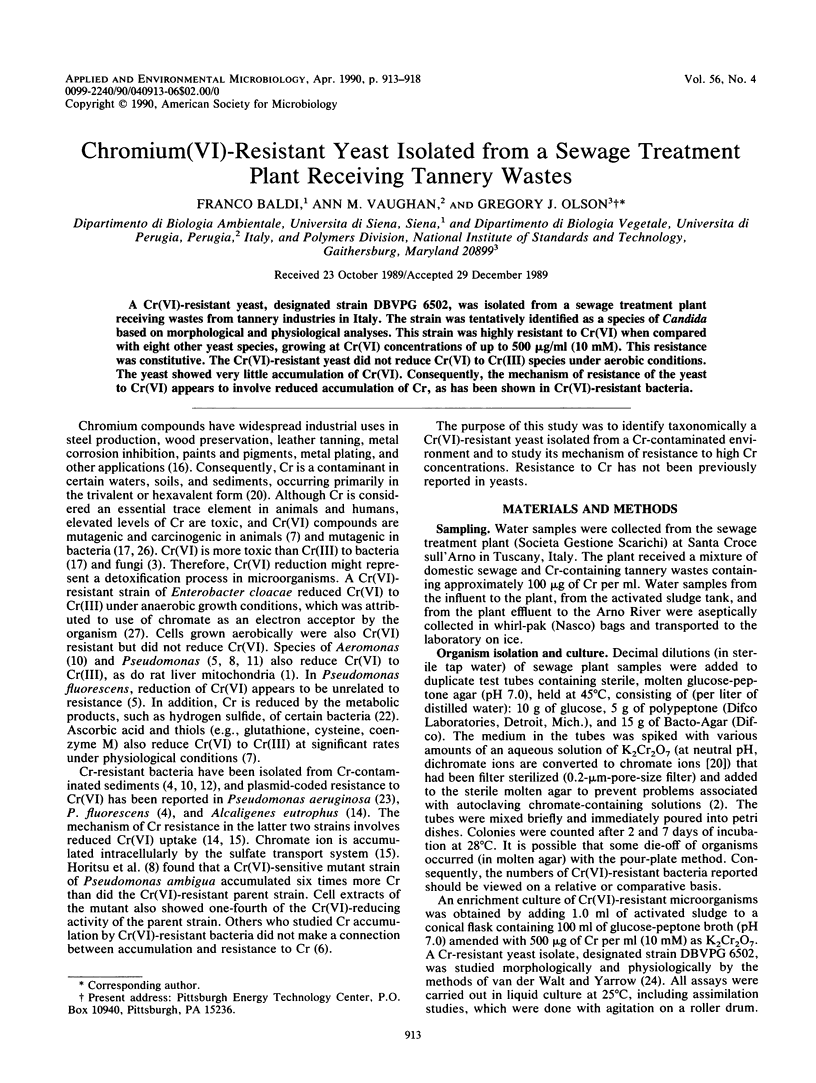
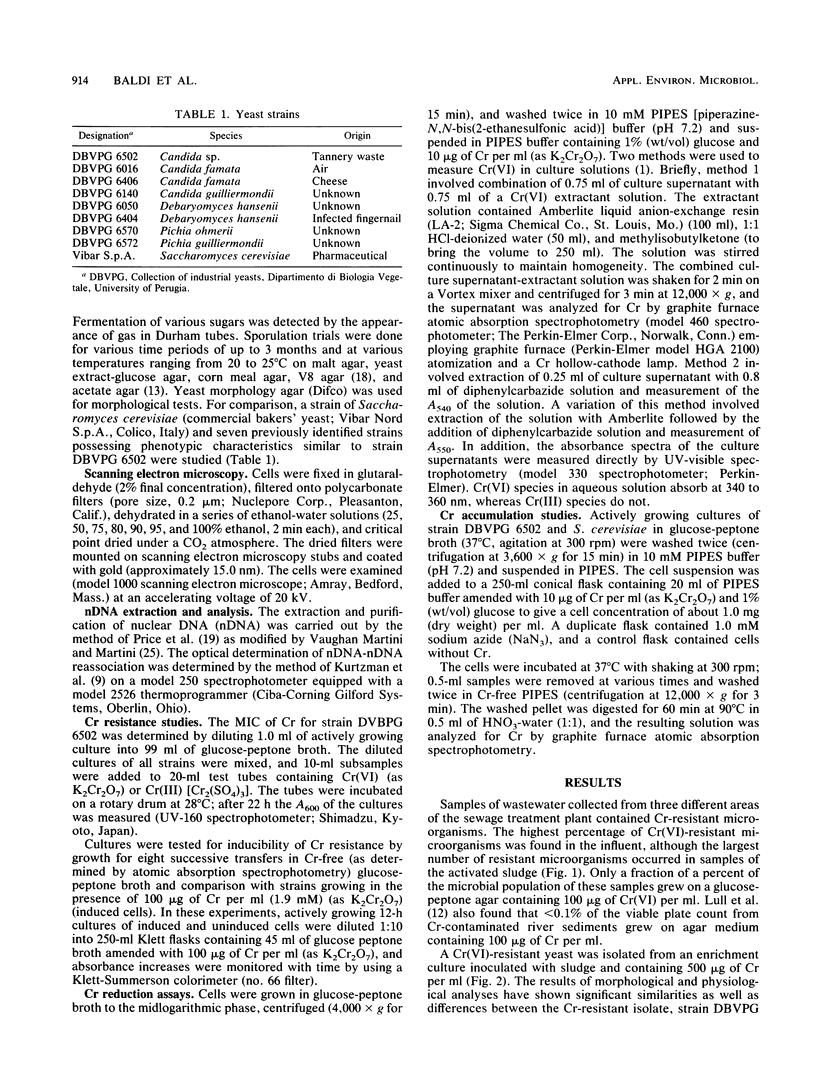
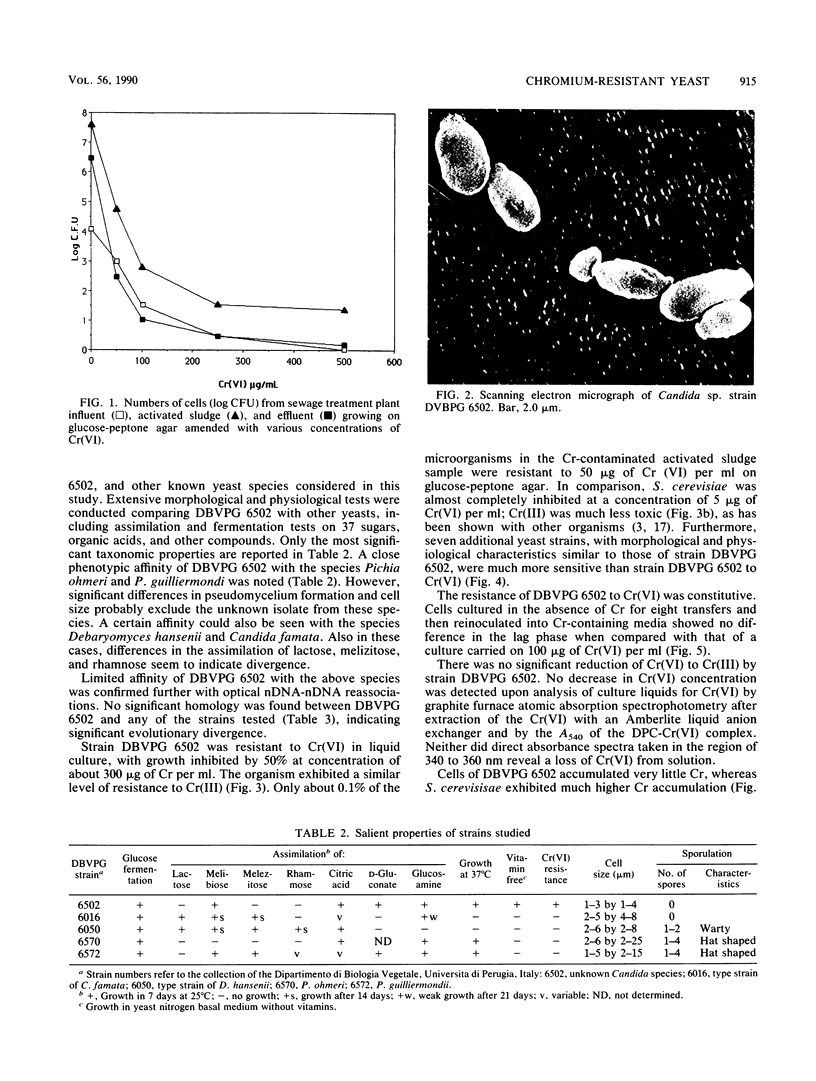
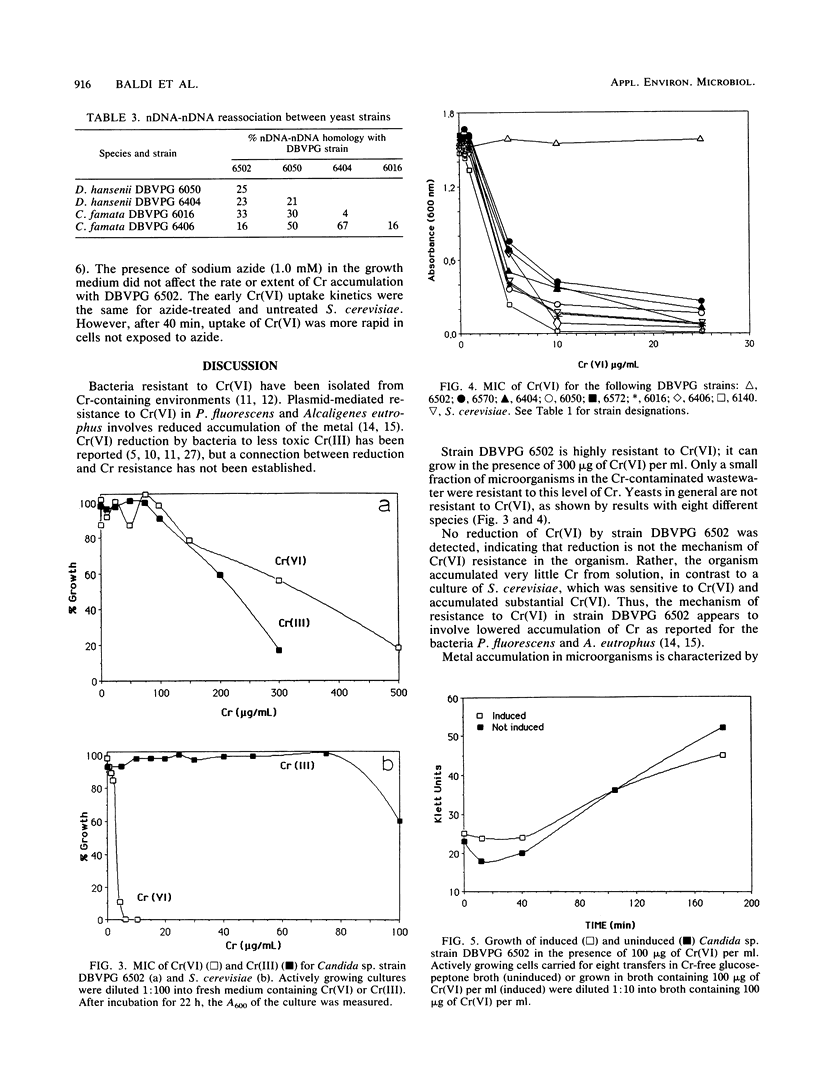
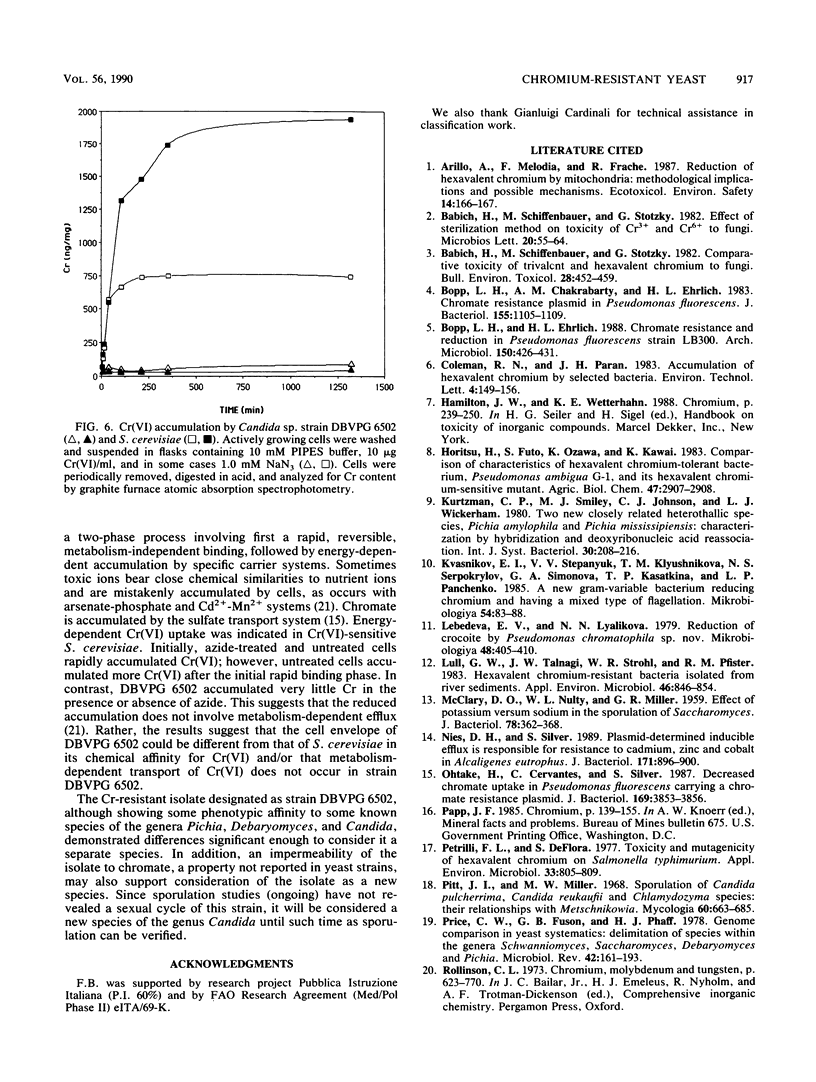
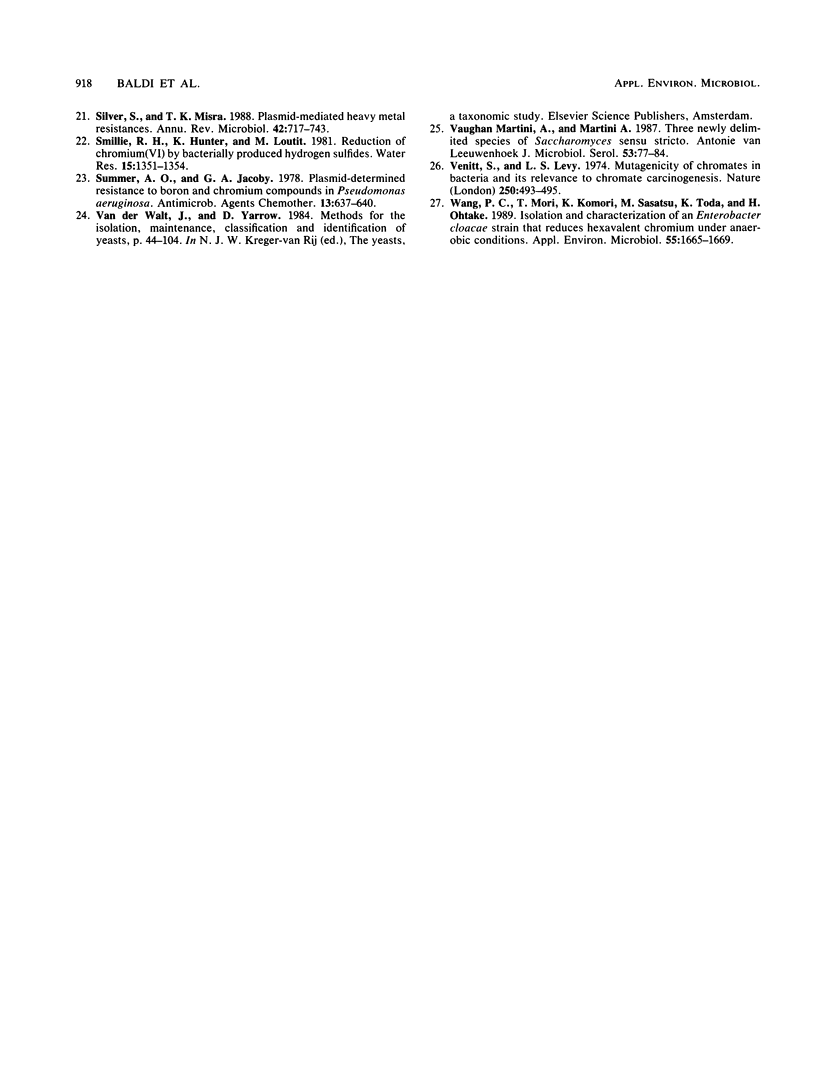
Images in this article
Selected References
These references are in PubMed. This may not be the complete list of references from this article.
- Babich H., Schiffenbauer M., Stotzky G. Comparative toxicity of trivalent and hexavalent chromium to fungi. Bull Environ Contam Toxicol. 1982 Apr;28(4):452–459. doi: 10.1007/BF01607710. [DOI] [PubMed] [Google Scholar]
- Bopp L. H., Chakrabarty A. M., Ehrlich H. L. Chromate resistance plasmid in Pseudomonas fluorescens. J Bacteriol. 1983 Sep;155(3):1105–1109. doi: 10.1128/jb.155.3.1105-1109.1983. [DOI] [PMC free article] [PubMed] [Google Scholar]
- Luli G. W., Talnagi J. W., Strohl W. R., Pfister R. M. Hexavalent chromium-resistant bacteria isolated from river sediments. Appl Environ Microbiol. 1983 Oct;46(4):846–854. doi: 10.1128/aem.46.4.846-854.1983. [DOI] [PMC free article] [PubMed] [Google Scholar]
- Martini A. V., Martini A. Three newly delimited species of Saccharomyces sensu stricto. Antonie Van Leeuwenhoek. 1987;53(2):77–84. doi: 10.1007/BF00419503. [DOI] [PubMed] [Google Scholar]
- McClary D. O., Nulty W. L., Miller G. R. EFFECT OF POTASSIUM VERSUS SODIUM IN THE SPORULATION OF SACCHAROMYCES. J Bacteriol. 1959 Sep;78(3):362–368. doi: 10.1128/jb.78.3.362-368.1959. [DOI] [PMC free article] [PubMed] [Google Scholar]
- Nies D. H., Silver S. Plasmid-determined inducible efflux is responsible for resistance to cadmium, zinc, and cobalt in Alcaligenes eutrophus. J Bacteriol. 1989 Feb;171(2):896–900. doi: 10.1128/jb.171.2.896-900.1989. [DOI] [PMC free article] [PubMed] [Google Scholar]
- Ohtake H., Cervantes C., Silver S. Decreased chromate uptake in Pseudomonas fluorescens carrying a chromate resistance plasmid. J Bacteriol. 1987 Aug;169(8):3853–3856. doi: 10.1128/jb.169.8.3853-3856.1987. [DOI] [PMC free article] [PubMed] [Google Scholar]
- Petrilli F. L., De Flora S. Toxicity and mutagenicity of hexavalent chromium on Salmonella typhimurium. Appl Environ Microbiol. 1977 Apr;33(4):805–809. doi: 10.1128/aem.33.4.805-809.1977. [DOI] [PMC free article] [PubMed] [Google Scholar]
- Price C. W., Fuson G. B., Phaff H. J. Genome comparison in yeast systematics: delimitation of species within the genera Schwanniomyces, Saccharomyces, Debaryomyces, and Pichia. Microbiol Rev. 1978 Mar;42(1):161–193. doi: 10.1128/mr.42.1.161-193.1978. [DOI] [PMC free article] [PubMed] [Google Scholar]
- Silver S., Misra T. K. Plasmid-mediated heavy metal resistances. Annu Rev Microbiol. 1988;42:717–743. doi: 10.1146/annurev.mi.42.100188.003441. [DOI] [PubMed] [Google Scholar]
- Summers A. O., Jacoby G. A. Plasmid-determined resistance to boron and chromium compounds in Pseudomonas aeruginosa. Antimicrob Agents Chemother. 1978 Apr;13(4):637–640. doi: 10.1128/aac.13.4.637. [DOI] [PMC free article] [PubMed] [Google Scholar]
- Venitt S., Levy L. S. Mutagenicity of chromates in bacteria and its relevance to chromate carcinogenesis. Nature. 1974 Aug 9;250(5466):493–495. doi: 10.1038/250493a0. [DOI] [PubMed] [Google Scholar]
- Wang P. C., Mori T., Komori K., Sasatsu M., Toda K., Ohtake H. Isolation and Characterization of an Enterobacter cloacae Strain That Reduces Hexavalent Chromium under Anaerobic Conditions. Appl Environ Microbiol. 1989 Jul;55(7):1665–1669. doi: 10.1128/aem.55.7.1665-1669.1989. [DOI] [PMC free article] [PubMed] [Google Scholar]



